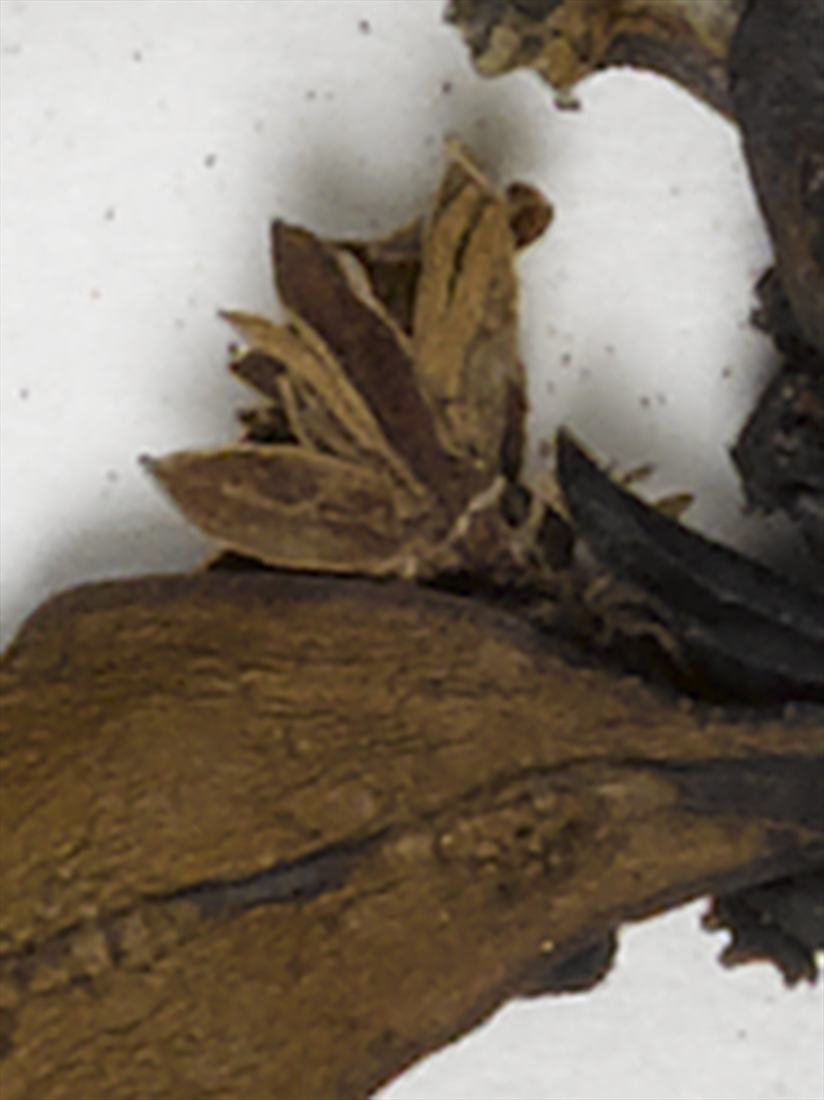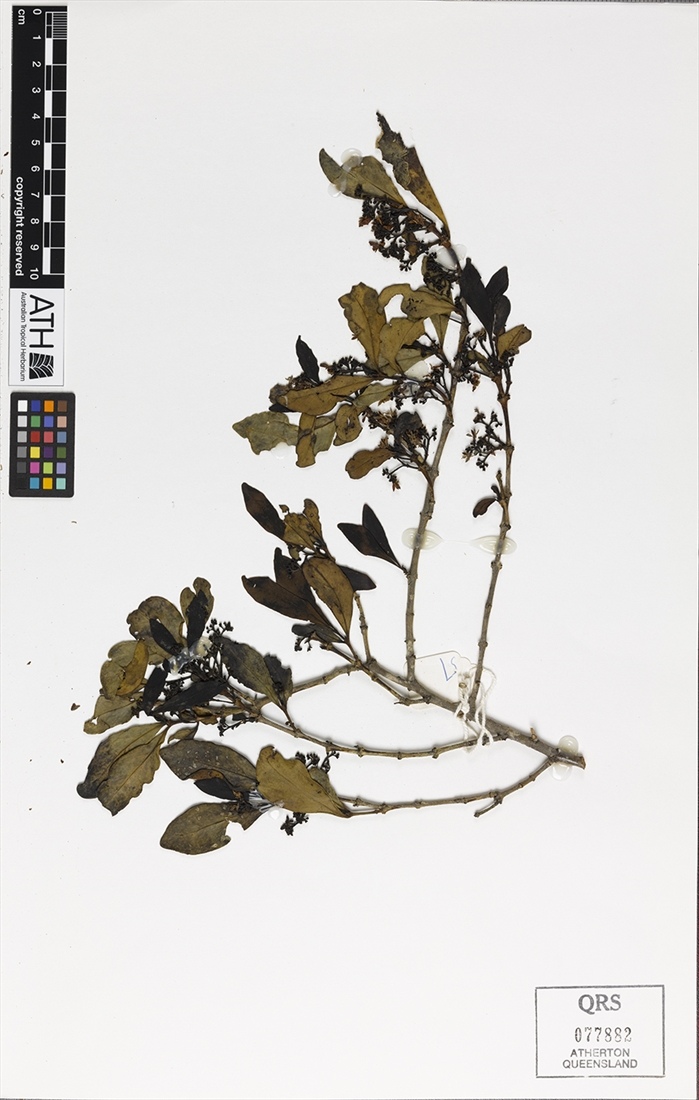Australian Tropical Rainforest Plants - Online edition
Psydrax odorata f. subnitida S.T.Reynolds & R.J.F.Hend.




Reynolds, S.T. & Henderson, R.J.F. (2004), Vanguerieae A.Rich. ex Dum. (Rubiaceae) in Australia, 3. Psydrax Gaertn. Austrobaileya 6(4): 841-842. Type: Queensland. Darling Downs District: near Texas on the road to Stanthorpe, 28 51'S, 151 14'E, 7 November 1993, P.I.Forster PIF14257 (holo: BRI).
Shrub or small tree to 12 m high; bark dark or pale creamy grey with white mottling; smooth or rough. Branchlets often with swollen nodes; stems and branches often distended and hollow (sometimes housing nests for ants). Young stems hairless or rarely very sparsely hairy.
Leaves simple, opposite. Stipules interpetiolar, triangular, acuminate to a fine point, 3-8 mm long, finger like glands or colleters occasionally present at base (between stipule and stem), c. 0.5 mm long. Petiole 2.5-6 mm long. Leaf blade elliptic to ± obovate, 3.5-6.5 cm long, 1.4-2.6 cm wide, base attenuate or cuneate, margins entire, apex obtuse or bluntly acute. Lateral veins 1 or 2, rarely 3 pairs. Domatia 1 or 2 on each side of midrib, usually small. Both surfaces hairless.
Inflorescences axillary, densely flowered with usually 20-36 flowers in corymbose dichasial cymes, primary peduncle 4-12 mm long. Flowers bisexual, actinomorphic, 5-merous (sometimes 4-merous), white or cream. Pedicels 0.5-9 mm long, hairy when young or glabrous. Calyx tubular and 1-2 mm long, lobes 4 to 5, c 0.5 mm long, glabrous, green. Corolla 3-7 mm long, tubular with erect or slightly recurved lobes, tube 0.5-2 mm long, lobes 3.5-5 mm long, glabrous but with hairs in throat, white or cream. Stamens 4 or 5, exserted from corolla tube; style 4-10 mm long, exserted, stigma ± obloid with longitudinal ridges, ovary inferior, 2-locular.
Features not available.
Occurs in CEQ, from near Mackay southwards to New South Wales, and west to Carnarvon N.P. Found in dry rainforest and vine thickets.
This profile information and associated coding has been adapted from Cooper & Cooper (2004), Harden et al. (2014) and Reynolds & Henderson (2004).





